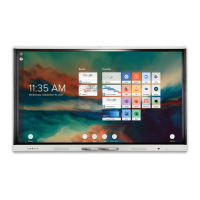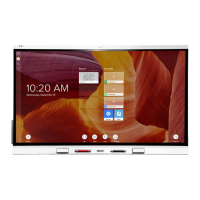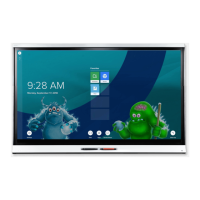Chapter 2
Installing the display
smarttech.com/kb/171555 25
In some situations, you may need to request an engineering analysis to determine if the wall can support the
display.
Selecting mounting hardware
The mounting hardware required for installation varies according to the type of wall onto which the display is
being mounted.
If you’re using the SMART wall mount (WM-SBID-200), see the wall mount’s illustrated installation
instructions for information about the required mounting hardware (smarttech.com/kb/171373).
Selecting a wall mount
It is always best to mount the display on a wall. If the wall can’t support the display’s weight, you can use
additional hardware to transfer some of the weight to the floor.
The display includes a pre-attached wall bracket which can be used to mount the display to the wall. See the
SBID-MX255-V2, SBID-MX265-V2, MX275-V2 and MX286-V2 installation instructions
(smarttech.com/kb/171547) or the SBID-MX255-V3, SBID-MX265-V3, MX275-V3 and MX286-V3 installation
instructions (smarttech.com/kb/171785).
Contact your authorized SMART reseller (smarttech.com/where) for information on SMART’s mounting
options.
If you choose a third-party option rather than one of SMART’s mounting options, be sure the wall mount can
accommodate the display’s dimensions and support the display’s weight as well as the weight of any
attached accessories.
Mounting the display
Mount the display following the included installation instructions. In addition, consider the following:
The electrical and mechanical components of a display are designed to work properly when the display is
mounted in the orientation described in its installation instructions. Mounting the display in a different
orientation can cause malfunctions and will void the display’s warranty.
There are a number of potential hazards of mounting a display in a non-standard orientation or angle:
l
Mounting a display horizontally (like a table top) can cause the glass to sag, damaging the display or
interfering with the display’s touch system.
l
Non-standard orientation can affect ventilation, creating hotpots in equipment, premature failures and,
in displays that use projectors, exploding projector bulbs.

